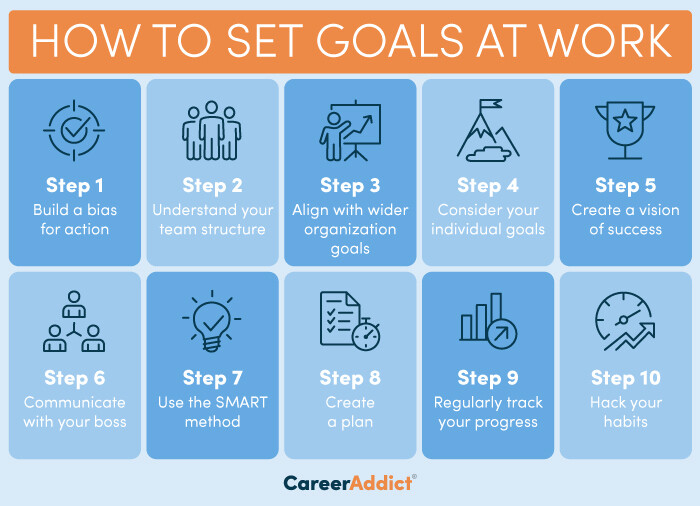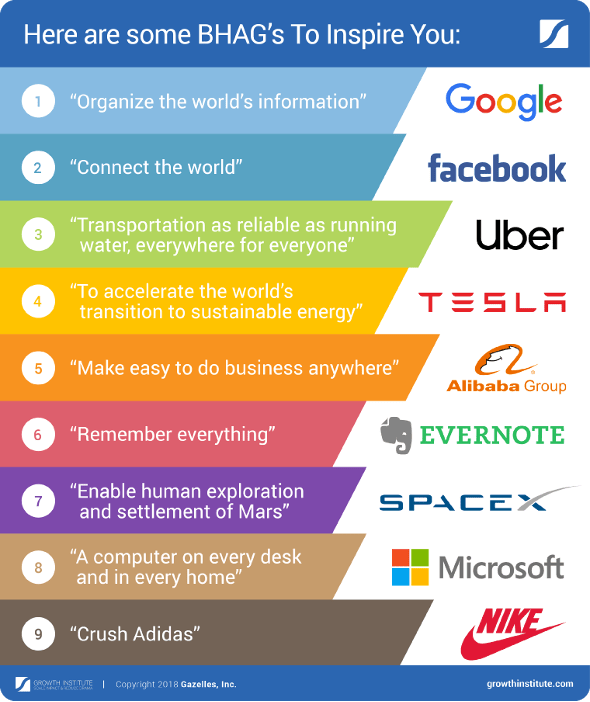Ready to level up in your career? Learn the 5 essential steps to set and achieve your growth goals at work.
Table of Contents
Introduction: What Are Growth Goals for Work?
Understanding personal growth goals for work and professional growth and development is like having a roadmap to becoming better at what you do. Even at a young age, it’s essential to grasp the concept of setting goals to improve yourself in school or future jobs.
Understanding Growth Goals
Let’s simplify things a bit. Growth goals are basically like a plan to get better at your job or schoolwork. Just like how you practice a sport to get better or study for a test to improve your grades, setting growth goals helps you focus on what you want to achieve and how to get there.
Step 1: Dream Big – Imagine Your Future!
When we talk about setting personal growth goals for work, we first need to start by dreaming big and imagining our future. Close your eyes and think about what you want to be when you grow up. Do you want to be a teacher, a doctor, an astronaut, or maybe even a famous actor?
Picture Your Success
Now, imagine yourself in that dream job. Picture yourself wearing that white coat as a doctor, teaching a classroom full of students, or flying high up in space. How does it feel to be doing what you love every day? Setting personal growth goals for work is like creating a map that will help you reach that exciting destination in the future.
Make Your Goals SMART
When it comes to achieving your dreams and growing in your work or school, it’s essential to set goals that are clear and achievable. That’s where SMART goals come in! Let’s break down what SMART stands for in a way that’s easy for kids to understand.

Image courtesy of www.careeraddict.com via Google Images
What SMART Stands For
SMART goals are goals that are Specific, Measurable, Achievable, Relevant, and Time-bound. Let’s break it down:
Specific: This means your goal should be clear and well-defined. Instead of saying, “I want to get better at math,” a specific goal would be, “I want to improve my multiplication skills by practicing for 20 minutes every day.”
Measurable: Your goal should have a way to track your progress. You should be able to see how far you’ve come and how close you are to reaching your goal. For example, you could track the number of math problems you can solve correctly each week.
Achievable: Your goal should be something that you can realistically accomplish. It’s great to dream big, but it’s also important to set goals that you can reach with effort and dedication. If you’re not great at math, setting a goal to become a math genius overnight might not be achievable. Start with small steps.
Relevant: Your goal should be meaningful to you and help you grow in a way that matters. Make sure your goal is something that you really want to achieve and that will help you in your work or school.
Time-bound: Set a deadline for when you want to achieve your goal. This will give you a sense of urgency and help you stay focused. For example, you could aim to improve your math skills by the end of the school semester.
By making your goals SMART, you’ll have a clear roadmap to success and be on your way to achieving your dreams!
Write Your Goals Down
Now that you have imagined your future and made your goals SMART, it’s time to take the next step: write your goals down. This step is crucial because writing your goals down can make them feel more real and help you remember them.
Making a Goals Chart
One fun way to keep track of your goals is by creating a colorful goals chart. You can use a piece of paper or a whiteboard to write down your goals in a way that is visually appealing to you. You can also add stickers or drawings to make it even more fun!
Take Action – Baby Steps!
When it comes to reaching your personal and professional development goals, it’s essential to remember that progress is made one step at a time. Just like practicing for a sport or learning a new game, you have to start small and build your way up.

Image courtesy of www.freepik.com via Google Images
One Step at a Time
Imagine you want to improve your reading skills to get better grades in school. Instead of trying to read an entire book in one sitting, you can start by reading a few pages each day. This way, you’re making progress towards your goal without feeling overwhelmed.
Similarly, if your goal is to be more organized with your homework, you can begin by setting aside a specific time each day to review your assignments and make a to-do list. These simple actions may seem small, but they add up over time and bring you closer to achieving your self development goals for work.
Remember, every little step you take towards your goals is a victory. So, don’t underestimate the power of baby steps in your personal and professional growth journey!
Check Your Progress
As you work towards your personal and professional development goals, it’s essential to take a moment to reflect on how far you’ve come. Checking your progress can show you just how much you’ve learned and grown along the way.
The Growth Scorecard
One fun way to keep track of your progress is by creating a growth scorecard. This can be a simple chart or diary where you jot down the steps you’ve taken towards your goals. You can mark off each milestone you achieve, giving you a visual representation of your progress.
By regularly updating your growth scorecard, you’ll be able to see the gradual improvements you’ve made over time. It can be incredibly motivating to look back and see how much you’ve accomplished, inspiring you to keep pushing forward towards your goals.
Celebrate Your Achievements!
Taking a moment to celebrate your achievements is super important! It’s like giving yourself a high-five for all the hard work you’ve put in. So, when you reach one of your self development goals for work, make sure to take a moment to acknowledge your success.
| Step | Description |
|---|---|
| 1 | Assess your current position |
| 2 | Identify areas for improvement |
| 3 | Set specific, achievable goals |
| 4 | Develop a plan of action |
| 5 | Track your progress and adjust as needed |

Image courtesy of www.wordstream.com via Google Images
Throw a Goal Party
One fun way to celebrate reaching your goals is by throwing a mini party! You can invite your family or friends to join in on the celebration. You can have some snacks, play some music, and even do a little happy dance to mark the occasion. It’s a great way to pat yourself on the back for a job well done!
Keep Growing – What’s Next?
Now that you’ve achieved your goals and celebrated your successes, it’s time to keep growing and setting new challenges for yourself. Just like in a video game where you move on to the next level after completing the current one, setting new goals helps you keep getting better and better.
Setting New Goals
Imagine you’ve just finished an amazing book and now you’re ready to start a new one. Setting new goals is like starting a new adventure or quest. It’s exciting to think about what you want to achieve next and how you can challenge yourself to reach even greater heights.
Summary: Your Path to Awesome
So, you’ve learned about setting personal growth goals for work and why they are important. Let’s recap the steps we discussed to help you define your own path to awesome.

Image courtesy of peoplemanagingpeople.com via Google Images
1. Dream Big – Imagine Your Future!
Remember, it’s essential to dream big and think about what you want to be when you grow up. Setting goals can help you turn those dreams into reality. Visualize your success and believe in yourself!
2. Make Your Goals SMART
Make sure your goals are SMART – Specific, Measurable, Achievable, Relevant, and Time-bound. This will help you create clear and achievable goals that you can easily understand and work towards.
3. Write Your Goals Down
Don’t forget to write your goals down. This will make them feel more real and help you remember what you’re working towards. You can even create a fun goals chart to keep track of your progress.
4. Take Action – Baby Steps!
Remember, every big goal starts with small steps. Just like training for a sport or learning a new game, taking small actions towards your goals will eventually lead to big achievements. Take it one step at a time!
5. Check Your Progress
It’s important to look back at what you’ve done and see how much you’ve learned and grown. Keeping track of your progress with a growth scorecard or diary can help you stay motivated and focused on your goals.
Now that you have a clear path to awesome, start thinking about your personal growth goals for work or school. Remember, you have the power to achieve great things by setting goals and taking small steps every day. Keep growing and leveling up to become the best version of yourself!
FAQs: Questions You Might Have
Can I Change My Goals?
Yes, absolutely! It’s completely okay to change your goals as you learn and grow. Sometimes, as you progress, you might discover new interests or realize that your initial goal no longer excites you. It’s important to be flexible and open to adjusting your goals along the way. Remember, the most important thing is that your goals reflect what you truly want to achieve.
What If I Don’t Reach My Goal?
If you don’t reach your goal, don’t worry! It’s all part of the learning process. Not reaching a goal doesn’t mean you’ve failed; it simply means there’s an opportunity to learn and try again. Take some time to reflect on why you didn’t achieve your goal and what you can do differently next time. Remember, setbacks are just stepping stones to success, and each attempt brings you closer to your goals.


Leave a Reply